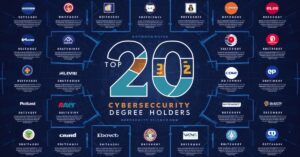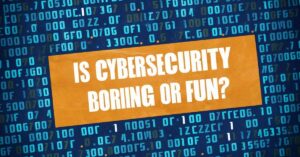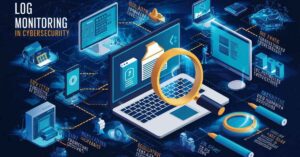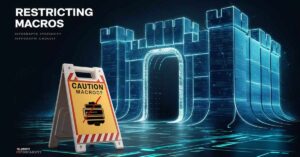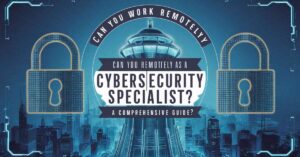In today’s fast-paced world, the quest for financial freedom has become more crucial than ever. Imagine waking up each morning without the weight of money worries on your shoulders. Picture a life where you’re in control of your finances, not the other way around. This isn’t just a pipe dream—it’s an achievable reality with the right knowledge and strategies. In this comprehensive guide, we’ll explore your easy and secure path to financial freedom, tailored specifically for our USA audience. We’ll delve into essential skills, smart investing, and crucial safety measures to help you navigate the journey ahead. Your Easy and Secure Path to Financial Freedom.
Learning New Skills and Building Online Presence
In the digital age, your path to financial freedom often begins with acquiring new skills and establishing a strong online presence. This combination can open doors to opportunities you might never have imagined possible.
Identifying Marketable Skills
The first step on your journey is to identify skills that are in high demand. Consider these options:
- Digital Marketing: From social media management to SEO, businesses always need skilled marketers.
- Data Analysis: With the rise of big data, those who can interpret it are invaluable.
- Programming: Coding skills remain highly sought after across industries.
- Content Creation: Quality writers, videographers, and graphic designers are always in demand.
- Project Management: Organizations need skilled individuals to keep projects on track.
“The capacity to learn is a gift; the ability to learn is a skill; the willingness to learn is a choice.” – Brian Herbert
Online Learning Platforms
Once you’ve identified skills to develop, it’s time to start learning. Fortunately, the Internet offers a wealth of resources:
| Platform | Specialization | Cost Range |
|---|---|---|
| Coursera | Academic courses | Free – $99/month |
| Udemy | Practical skills | $10 – $200 per course |
| edX | University-level courses | Free – $300 per course |
| LinkedIn Learning | Professional development | $29.99/month |
| Skillshare | Creative skills | $15/month or $99/year |
Creating a Personal Brand
Your personal brand is your professional identity online. It’s how you present yourself to potential clients, employers, or business partners. To build a strong personal brand:
- Develop a consistent message: What do you want to be known for?
- Create a professional website: Showcase your skills and portfolio.
- Craft a compelling bio: Use it across all your professional platforms.
- Share valuable content: Demonstrate your expertise through blog posts, videos, or podcasts.
Leveraging Social Media for Professional Growth
Social media isn’t just for cat videos and memes—it’s a powerful tool for professional networking and growth. Here’s how to use it effectively:
- LinkedIn: Connect with professionals in your field, share industry insights, and look for job opportunities.
- Twitter: Engage in industry conversations, follow thought leaders, and share your own insights.
- Instagram: If your field is visual (like design or photography), showcase your work here.
- YouTube: Create tutorials or informative videos related to your expertise.
Remember, consistency is key. Regular, thoughtful engagement can significantly boost your professional visibility and opportunities. Your Easy and Secure Path to Financial Freedom.
Networking and Securing Gigs

With your skills honed and online presence established, it’s time to start turning those efforts into income—a crucial step on your path to financial freedom.
Related Post: Your Easy and Secure Path to Financial Freedom
Building a Professional Network
Networking isn’t just about collecting business cards or LinkedIn connections. It’s about building meaningful professional relationships. Here are some strategies:
- Attend industry events: Conferences, workshops, and meetups are great places to connect with like-minded professionals.
- Join professional associations: These often offer networking events, resources, and job boards.
- Engage in online communities: Participate in discussions on forums like Reddit or industry-specific platforms.
- Offer value: Don’t just ask for favors—look for ways to help others in your network.
Freelancing Platforms
Freelancing can be an excellent way to start earning from your skills. Popular platforms include:
- Upwork: Offers a wide variety of job types, from writing to programming.
- Fiverr: Great for offering specific services or “gigs”.
- Toptal: For top-tier freelancers in development, design, and finance.
- Freelancer.com: Another general platform with a wide range of job categories.
Pro Tip: Start with smaller jobs to build your reputation, then gradually increase your rates as you gain positive reviews.
Remote Work Opportunities
The COVID-19 pandemic has accelerated the trend towards remote work, opening up a world of opportunities. Some strategies to find remote work:
- Use job boards specifically for remote work, like We Work Remotely or Remote.co.
- Set your LinkedIn profile to show you’re open to remote work.
- Consider becoming a virtual assistant or customer service representative—these roles are often remote-friendly. Your Easy and Secure Path to Financial Freedom.
Turning Hobbies into Income Streams
Your path to financial freedom doesn’t have to be all work and no play. Consider how you might monetize your hobbies:
- If you enjoy crafting, open an Etsy shop.
- Love photography? Sell your photos on stock image sites.
- Passionate about fitness? Become an online personal trainer.
Remember, the key to financial freedom often lies in developing multiple income streams. Don’t be afraid to get creative!
Financial Investing and Management
As you start generating income from your new skills and gigs, it’s crucial to manage and invest your money wisely. This is where your path to financial freedom really starts to take shape.
Budgeting Basics
A solid budget is the foundation of financial freedom. Here’s a simple method to get started:
- Track your spending: Use apps like Mint or YNAB to categorize your expenses.
- Follow the 50/30/20 rule: Allocate 50% of your income to needs, 30% to wants, and 20% to savings and debt repayment.
- Review and adjust regularly: Your budget should be flexible as your income and expenses change.
Emergency Fund Essentials
An emergency fund is your financial safety net. Here’s how to build one:
- Aim for 3-6 months of living expenses: This can cover you in case of job loss or unexpected costs.
- Keep it liquid: Use a high-yield savings account for easy access.
- Start small: Even $500 can make a difference in an emergency.
Investment Options for Beginners
Investing is key to building long-term wealth. Here are some options to consider:
- Index funds: These offer broad market exposure with low fees.
- Robo-advisors: Platforms like Betterment or Wealthfront automate investing for you.
- 401(k): If your employer offers a match, contribute at least enough to get the full match—it’s free money!
- Roth IRA: This offers tax-free growth and withdrawals in retirement.
“The best time to plant a tree was 20 years ago. The second best time is now.” – Chinese Proverb
This applies perfectly to investing. Start now, even if you can only invest a small amount.
Retirement Planning Strategies
It’s never too early to start planning for retirement. Consider these strategies:
- Start early: Thanks to compound interest, even small contributions can grow significantly over time.
- Diversify your portfolio: Don’t put all your eggs in one basket.
- Increase contributions over time: As your income grows, boost your retirement savings.
- Consider a health savings account (HSA): This offers triple tax benefits and can be used as a retirement account.
Internet Safety
In our digital age, securing your path to financial freedom also means protecting your digital assets and information. Your Easy and Secure Path to Financial Freedom.
Protecting Personal Information Online
Your personal information is valuable—protect it with these steps:
- Use strong, unique passwords for each account.
- Enable two-factor authentication wherever possible.
- Be cautious about what information you share on social media.
- Regularly check your credit report for any suspicious activity.
Secure Online Banking Practices
As you manage your finances online, follow these best practices:
- Use a secure, private internet connection for online banking.
- Never click on links in emails claiming to be from your bank—go directly to the bank’s website instead.
- Set up alerts for large transactions on your accounts.
- Regularly review your statements for any unauthorized transactions.
Avoiding Common Financial Scams
Stay vigilant against these common scams:
- Phishing emails: These try to trick you into revealing personal information.
- Investment scams: Be wary of promises of unrealistically high returns.
- Identity theft: Protect your social security number and other personal details.
- Fake job postings: Be cautious of job offers that seem too good to be true.
Cybersecurity Tools and Tips
Enhance your online security with these tools and practices:
- Use a VPN: This encrypts your internet connection, especially important on public Wi-Fi.
- Install antivirus software: Keep it updated to protect against the latest threats.
- Use a password manager: This helps you create and store strong, unique passwords.
- Keep software updated: This ensures you have the latest security patches.
In Conclusion
Your path to financial freedom is a journey, not a destination. It requires continuous learning, adaptation, and vigilance. By developing valuable skills, building a strong online presence, networking effectively, managing your finances wisely, and prioritizing online safety, you’re well on your way to achieving the financial freedom you desire.
Remember, everyone’s path is unique. What works for others may not work for you, and that’s okay. The key is to start, stay consistent, and keep learning. Your future self will thank you for the steps you take today towards financial freedom.
FAQs
Q: How do you secure financial freedom?
Securing financial freedom involves several key steps:
- Define clear financial goals
- Create and stick to a budget
- Invest wisely and consistently
- Develop multiple income streams
- Continuously educate yourself about personal finance
Q: What are the 5 steps to financial freedom?
The 5 key steps to financial freedom are:
- Assess your current financial situation: Understand your net worth, income, and expenses.
- Set specific, measurable financial goals: Both short-term and long-term.
- Create a robust savings and investment plan: This should align with your goals and risk tolerance.
- Eliminate high-interest debt: Focus on paying off credit cards and personal loans.
- Increase your income: Through skills development, side hustles, or career advancement.
Q: What are 10 steps to financial freedom?
Here’s a more detailed roadmap with 10 steps to financial freedom:
- Track your spending
- Create a realistic budget
- Build an emergency fund
- Pay off high-interest debt
- Invest in your retirement
- Diversify your investments
- Increase your income
- Live below your means
- Educate yourself about personal finance
- Regularly review and adjust your financial plan
Q: How do you describe financial freedom?
Financial freedom can be described as the state of having sufficient personal wealth to live comfortably without being burdened by the need for a monthly paycheck. It means having control over your finances rather than being controlled by them, allowing you to make life decisions without being overly stressed about the financial impact.


